|
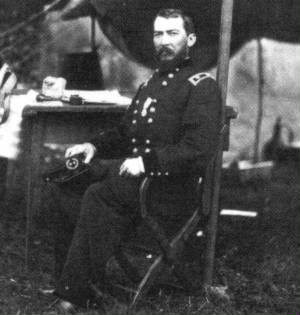
|
| Lt. General Philip H. Sheridan |
President Ulysses S. Grant secretly decided to go to war with the Plains Indians. Lt. General Philip H. Sheridan was
put in charge of gaining control using whatever force necessary.
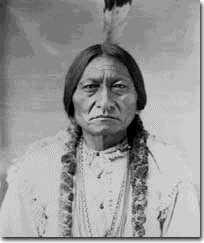
|
| Hunkpapa Leader, Sitting Bull |
Many Plains Indians that had refused to make peace and move to reservations were gathering with the great Sioux leader,
Sitting Bull, to hunt and to take a stand against reservation life. The camp was estimated to be three miles long with about
7,000 Native Americans. The Indians were tired of reservation life and left the Great Sioux Reservation in protest. A couple
weeks prior to the Battle of Little Bighorn, Sitting Bull had a vision during the Sun Dance, a summer tribal ritual.
He saw U.S. Soldiers and horses, upside down, falling from the sky. He saw a great victory in store for the Indian people.
He shared the news with his followers and it inspired them and gave them hope.
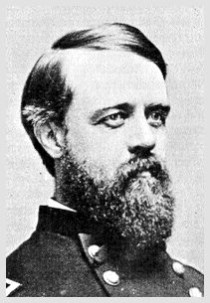
|
| General Alfred H.Terry |
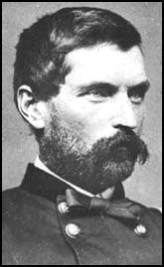
|
| Colonel John Gibbon |
Many Indians left the reservations following the broken 1868 Laramie Peace Treaty. All Indians that were not on reservations
by January 31, 1876 would be considered hostile.
General Alfred H.Terry, Colonel John Gibbon, and General George Crook were placed in command (by Philip Sheridan) of
the campaign to locate the immense gathering of Plains Indians, mainly Sioux and Cheyenne. Lt. Colonel Custer, Major Reno,
and Captain Benteen were part of Terry's column.
After locating the Indian
gathering near the Rosebud River, they planned an attack. Crook was to attack from the South, and Terry would take the "Far West",
a steamboat that held the supplies, down the Yellowstone River all the way to the mouth of the Bighorn River and meet Gibbon and his
men there. Then they would head south to attack. On his way north, Crook and his entire command were ambushed by Lakota and
Cheyenne Indians. Crook was forced to withdraw from the campaign.
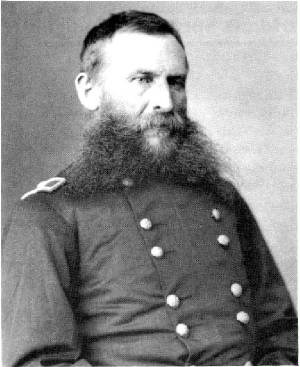
|
| General George Crook |
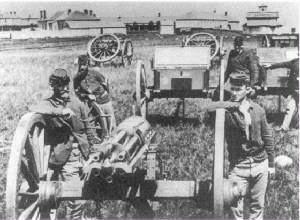
|
| Gatling Gun |
Click here to learn more about Indian Scouts
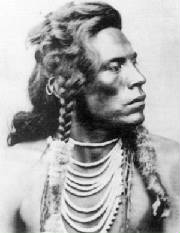
|
| Curley - One of Custer Crow Scouts |
General Terry put Custer in charge of the 7th Cavalry and was given the option of taking Gibbon's 2nd Cavalry with
the 7th, but he refused. As arrogant as Custer was, he thought the 7th could handle it alone. He traded his Gatling guns for
six Crow scouts, including Gibbon's best scout Mitch Boyer, a half-breed Sioux. Custer claimed the Gatling guns would only
slow him down. Besides, he expected the Indians to run.
This was a huge mistake for Custer and his men. Custer and his command would travel south down the Rosebud River. With over 600 men, Custer, Reno and Benteen would attack the Indian Village from the South. Terry and Gibbon would offer backup from the north. He ordered Benteen
and his three companies to scout the bluffs and he ordered Reno and his three companies to head up the Bighorn River and attack the village from the north. Custer's scouts reported more than 1000 warriors had gathered.
Custer had greatly under estimated their numbers. The Crow Scouts informed Custer that the village knew of his arrival.
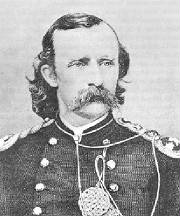
After the dust settled, Custer and his men were dead. Custer's last stand to control the Indians was a failure. Terry
and Gibbon arrived a day later to find the 210 dead and mutilated men and the Indians gone. It had been a great Indian Victory,
but little did the Northern and Southern Cheyenne, Sioux, Oglala, Brule, Minniconjou, Sans Arc, Uncapa, and some Santee know, this would
be the last victory for them and their way of life.
"Soon, like a clap of thunder, causing the bravest among us to blench, came a report from
the opposite side of the river that Lieut. Bradley had found one hundred and ninety-six dead cavalrymen on the hills, and
the question arose on all sides."Where's Custer? Where's Custer?" Everyone was wrought up to the most intense pitch
of excitement."
Captain W. Clifford Diary June 27, 1876
|
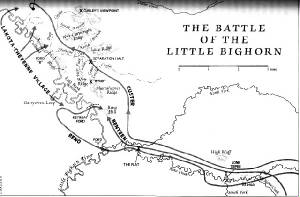
|
| Click for larger view |
|
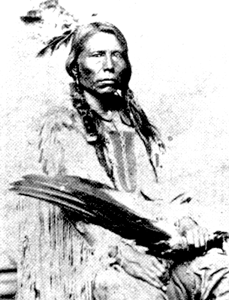
|
| Crazy Horse |
|
Crazy Horse made his reputation as a fierce warrior and led many into battle.
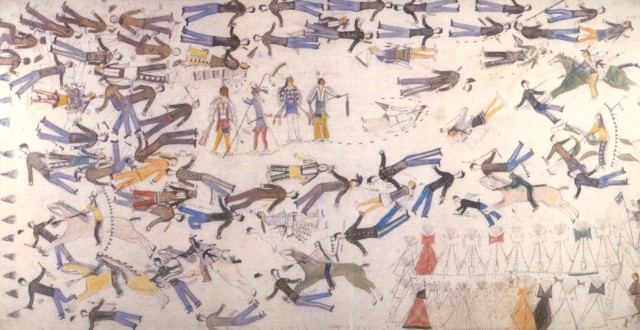
Battle scene painting on muslin by Kicking Bear (Lakota) Southwest Museum
|
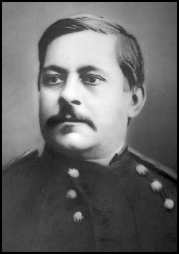
|
| Major, Marcus Reno |
Major Marcus Reno was second in command and his three companies were to assist Custer in finding Sitting Bull and returning
his people to the reservation.
|
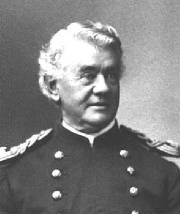
|
| Captain, Frederick Benteen |
Captain, Frederick Benteen never joined Custer troops and many
believe that he abandoned Custer leaving him to fight on his own.
|
|

